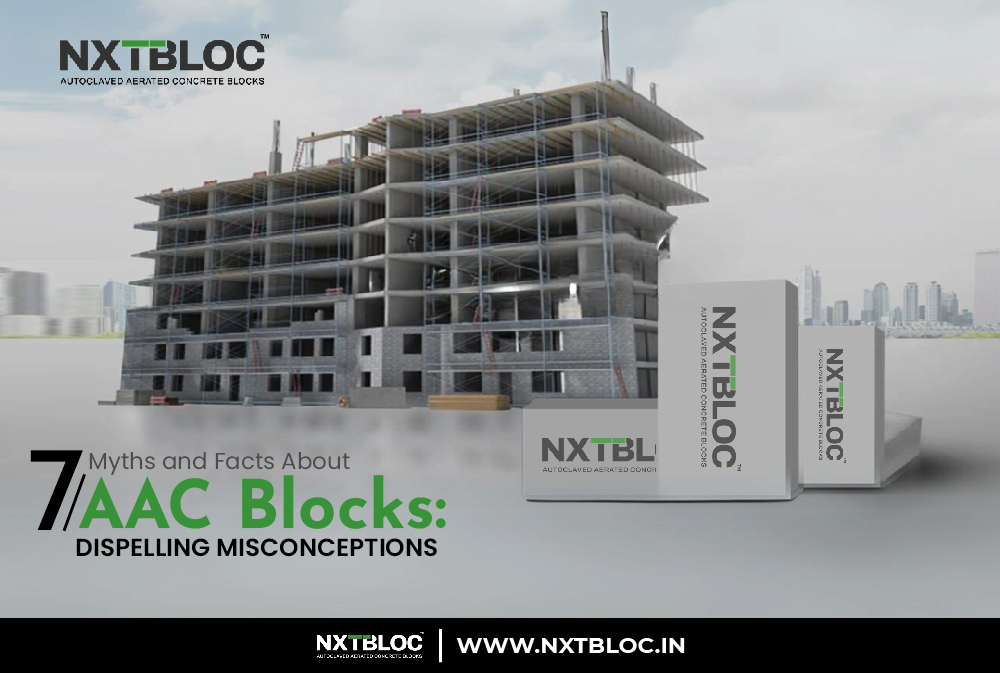In the dynamic world of construction materials, AAC (Autoclaved Aerated Concrete) blocks have gained widespread popularity for their unique properties. However, as with any innovation, misconceptions often arise.
In this article, we unravel the myths surrounding AAC blocks and present the facts that set the record straight.
Table of Contents

1. Myth: AAC Blocks Are Weak Due to Their Lightweight Nature
Fact: Lightweight but Mighty
One prevalent myth about AAC blocks is that their lightweight nature compromises their strength. In reality, AAC blocks are engineered to be lightweight without sacrificing structural integrity. The autoclaving process they undergo imparts exceptional compressive strength, making them suitable for load-bearing applications.
2. Myth: AAC Blocks Lack Durability Compared to Traditional Bricks
Fact: Durability Redefined
Contrary to the belief that AAC blocks are less durable, they, boast a remarkable durability factor. The combination of high compressive strength and resistance to weathering makes AAC blocks a durable choice for various construction projects. They withstand the test of time, ensuring longevity and minimal maintenance.
3. Myth: AAC Blocks Are Expensive
Fact: Cost-Effective in the Long Run
While the upfront cost of AAC blocks might seem higher than traditional bricks, their overall cost-effectiveness becomes apparent over time. The ease of installation, reduced labour costs, and energy efficiency contribute to long-term savings. Homeowners find that the initial investment pays off in terms of lower utility bills and minimal maintenance expenses.
4. Myth: AAC Blocks Are Not Environmentally Friendly
Fact: Green Building Material
There is a misconception that AAC blocks have a significant environmental impact. On the contrary, AAC blocks are considered an environmentally friendly building material. The manufacturing process involves minimal waste, and the use of natural materials, coupled with their energy-efficient properties, makes AAC blocks a green choice for sustainable construction.

5. Myth: AAC Blocks Have Limited Applications
Fact: Versatile Building Solution
Some believe that AAC blocks are limited in their applications. In reality, these blocks exhibit versatility, making them suitable for a wide range of construction projects. From residential buildings to commercial complexes and industrial structures, AAC blocks have proven their adaptability across diverse applications.
6. Myth: AAC Blocks Do Not Provide Adequate Insulation
Fact: Superior Thermal Insulation
Another misconception revolves around the thermal insulation capabilities of AAC blocks. The truth is that the unique cellular structure of AAC blocks, with countless air pores, delivers superior thermal insulation. This not only enhances the comfort of living spaces but also contributes to energy efficiency, reducing heating and cooling costs.
7. Myth: AAC Blocks Are Prone to Termite Infestation
Fact: Termite-Resistant Properties
Some sceptics suggest that AAC blocks are susceptible to termite infestation. However, AAC blocks are inherently resistant to termites and pests. This quality adds to their appeal in regions where termite-related issues are a concern, providing homeowners with peace of mind.
Conclusion: Making Informed Choices in Construction

As we dispel these myths surrounding AAC blocks, it becomes evident that they stand as a formidable and reliable building material. From structural strength to energy efficiency, AAC blocks have debunked misconceptions and established themselves as a game-changer in the construction industry.
In the pursuit of constructing sustainable, durable, and cost-effective structures, it is essential to separate fact from fiction. AAC blocks have proven their mettle, offering a host of benefits that contribute to the evolution of modern construction practices. As we move forward, let’s embrace informed decision-making and acknowledge NXTBLOC AAC blocks for what they truly are – a revolutionary force shaping the future of construction.
